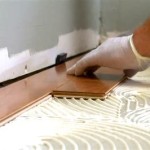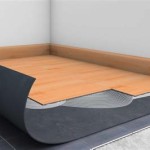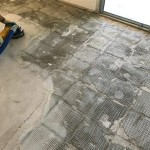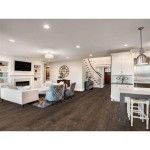The Benefits of Modular Wood Flooring in Homes
Modular wood flooring has emerged as a compelling alternative to traditional hardwood flooring options. Its unique construction and installation methods offer a range of advantages, impacting aesthetics, practicality, and sustainability. Understanding these benefits enables homeowners to make informed decisions when selecting flooring materials for their residences.
Ease of Installation and Reduced Labor Costs
One of the most significant benefits of modular wood flooring is its simplified installation process. Unlike traditional hardwood which often requires professional fitting and specialized tools, modular systems are designed for ease of assembly. These systems typically employ a click-lock or tongue-and-groove mechanism, allowing individual planks or tiles to be interconnected without the need for nails, screws, or adhesives in many cases. This simplifies the installation process, making it accessible to experienced DIY enthusiasts and reducing the need for professional installers, thereby lowering labor costs.
Further enhancing the installation process is the reduced requirement for subfloor preparation. Traditional hardwood flooring often necessitates a perfectly level and smooth subfloor to prevent unevenness or movement. Modular wood flooring, particularly engineered options, can often accommodate minor imperfections in the subfloor, saving time and expense associated with extensive subfloor leveling. This adaptability makes it an attractive option for renovations where existing subfloors may not be ideal. The speed of installation is also a significant advantage; a room can be floored in a fraction of the time compared to traditional methods, minimizing disruption to household routines.
The modular nature of the system also allows for easy repairs. If a plank or tile is damaged, it can be readily replaced without the need to remove and replace large sections of the flooring. This targeted repair capability significantly extends the lifespan of the flooring and reduces the overall cost of ownership.
Enhanced Stability and Durability
Modular wood flooring, particularly engineered wood options, exhibits superior stability compared to solid hardwood. Solid hardwood is susceptible to expansion and contraction due to changes in humidity and temperature, potentially leading to warping, cracking, or gapping. Engineered wood flooring, on the other hand, is constructed with multiple layers of wood veneer bonded together, often with a core layer of high-density fiberboard (HDF) or plywood. This layered construction provides inherent dimensional stability, minimizing the impact of environmental fluctuations. This makes it a suitable choice for areas prone to moisture, such as basements and kitchens, where solid hardwood might not be appropriate.
The durable wear layer on modular wood flooring provides resistance to scratches, dents, and stains. This wear layer is typically made of a protective coating, such as polyurethane or aluminum oxide, which enhances the floor's resistance to daily wear and tear. This makes it suitable for high-traffic areas and households with children and pets. Some modular wood flooring options even incorporate advanced scratch-resistant technologies for added protection.
Furthermore, the manufacturing process of modular wood flooring often includes treatments that enhance its resistance to moisture and mold. This is particularly important in humid environments or areas prone to spills. These treatments help to prevent the growth of mold and mildew, contributing to a healthier indoor environment and extending the lifespan of the flooring.
Design Versatility and Aesthetic Appeal
Modular wood flooring offers a wide range of design options, allowing homeowners to achieve a variety of aesthetic styles. It is available in a multitude of wood species, finishes, and plank sizes, allowing for customization to match different interior design schemes. Whether the desired look is traditional, modern, rustic, or contemporary, there is a modular wood flooring option to suit the taste.
The modular format allows for creative design possibilities. Planks can be arranged in various patterns, such as herringbone, chevron, or brick, to create unique and visually appealing floor layouts. The ease of cutting and shaping modular planks facilitates the creation of custom borders, inlays, and transitions between different flooring types. This design flexibility empowers homeowners to personalize their spaces and achieve a distinctive look.
Moreover, advancements in printing and embossing technologies have enabled manufacturers to create modular wood flooring that closely mimics the appearance of natural hardwood, including grain patterns, knots, and textures. This allows homeowners to enjoy the aesthetic benefits of hardwood without the associated costs and maintenance requirements. Some options even simulate the look of reclaimed wood, offering a sustainable and stylish flooring solution.
The availability of various sheen levels, from matte to high gloss, further enhances the design versatility of modular wood flooring. Matte finishes tend to conceal scratches and imperfections, making them suitable for high-traffic areas, while high-gloss finishes create a more formal and elegant appearance. The choice of sheen level can significantly impact the overall aesthetic of the room.
Acoustic Properties and Comfort
Modular wood flooring can contribute to improved acoustics within a home. The layered construction of engineered wood flooring, in particular, can help to dampen sound transmission, reducing noise levels and creating a more comfortable living environment. This is particularly beneficial in multi-story homes or apartments where noise can be a significant concern.
Some modular wood flooring options incorporate an underlayment material that further enhances their acoustic properties. This underlayment acts as a sound barrier, absorbing impact noise and reducing the transmission of sound to adjacent rooms. This makes it an excellent choice for bedrooms, living rooms, and home offices where a quiet environment is desired.
In addition to acoustics, modular wood flooring can also provide a degree of thermal comfort. Wood is a natural insulator, and modular wood flooring can help to retain heat in colder months, reducing energy consumption and creating a warmer living space. This is especially noticeable compared to colder flooring materials like tile or concrete.
The surface of modular wood flooring is generally warmer and softer underfoot than other hard flooring options. This provides a more comfortable walking experience and can reduce fatigue, especially for individuals who spend extended periods standing or walking on the floor. The resilience of some modular wood flooring options can also help to absorb impact, reducing stress on joints and muscles.
Environmental Considerations and Sustainability
Modular wood flooring can be a more sustainable flooring option compared to solid hardwood, particularly when sourced from responsibly managed forests. Engineered wood flooring, for example, utilizes less solid wood than traditional hardwood flooring, as only the top layer is made of solid wood. This reduces the demand for virgin timber and helps to conserve forest resources.
Many manufacturers of modular wood flooring adhere to sustainable forestry practices, such as the Forest Stewardship Council (FSC) certification. FSC certification ensures that the wood used in the flooring is sourced from forests that are managed in an environmentally responsible and socially beneficial manner. Choosing FSC-certified modular wood flooring supports sustainable forestry practices and contributes to the preservation of forests.
The manufacturing process of some modular wood flooring options incorporates recycled materials, further reducing its environmental impact. This can include recycled wood fibers, plastics, or other materials. Using recycled materials helps to divert waste from landfills and reduces the demand for virgin resources.
The durability and longevity of modular wood flooring also contribute to its sustainability. By lasting longer than other flooring options, it reduces the need for frequent replacements, minimizing waste and conserving resources. Additionally, the ability to easily repair individual planks or tiles extends the lifespan of the flooring and further reduces waste.
Furthermore, some modular wood flooring options are manufactured with low-VOC (volatile organic compound) adhesives and finishes. VOCs are chemicals that can be released into the air and contribute to indoor air pollution. Choosing low-VOC modular wood flooring helps to create a healthier indoor environment by minimizing the release of harmful chemicals.
The relatively lightweight nature of modular wood flooring compared to solid hardwood can also result in lower transportation costs and reduced carbon emissions associated with its delivery. This contributes to a smaller overall environmental footprint for the product.
Ultimately, the selection of flooring involves a careful evaluation of numerous factors, including cost, aesthetics, durability, and environmental impact. Modular wood flooring presents a compelling combination of advantages in each of these areas, making it a viable and increasingly popular choice for homeowners seeking a durable, versatile, and sustainable flooring solution.

Benefits Of Wooden Flooring For N Homes

Benefits Of Wooden Flooring For N Homes

Choosing Wood Floors In Your Living Room Tarkett

Everything You Need To Know About Laminate Tarkett

Benefits Of Choosing Grey Wooden Flooring For Your Home Lamiwood Designer Floors

Creative Ways To Use Wooden Tiles In Your Home Beautiful Homes

The 7 Types Of Resilient Flooring Floor Trends Installation

Modern Parquet Flooring Ideas For Your Home Beautiful Homes

Choosing Wood Floors In Your Living Room Tarkett

Complete Guide To Laminate Flooring In With Cost And Benefits
See Also







